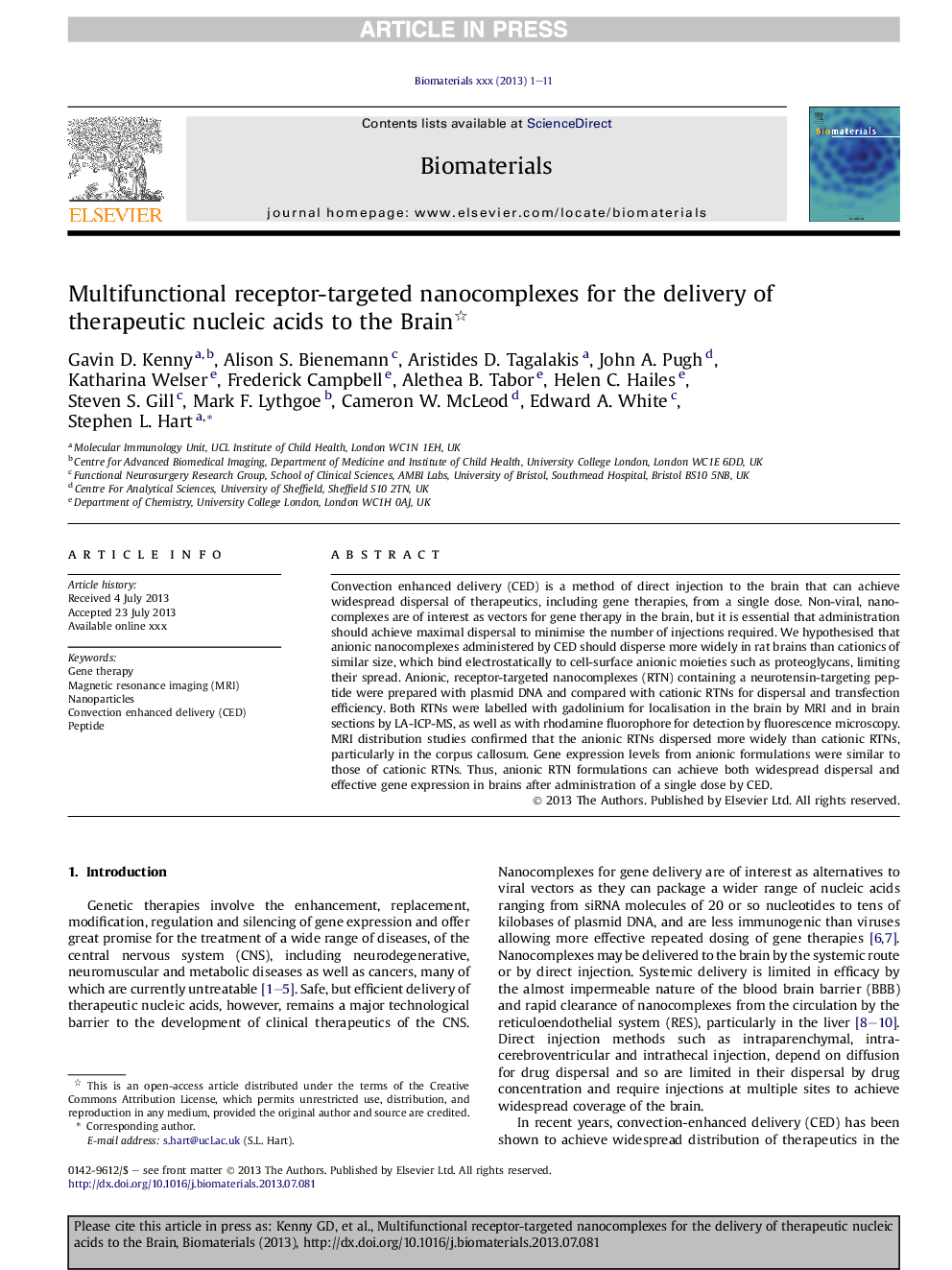| Article ID | Journal | Published Year | Pages | File Type |
|---|---|---|---|---|
| 10228339 | Biomaterials | 2013 | 11 Pages |
Abstract
Convection enhanced delivery (CED) is a method of direct injection to the brain that can achieve widespread dispersal of therapeutics, including gene therapies, from a single dose. Non-viral, nanocomplexes are of interest as vectors for gene therapy in the brain, but it is essential that administration should achieve maximal dispersal to minimise the number of injections required. We hypothesised that anionic nanocomplexes administered by CED should disperse more widely in rat brains than cationics of similar size, which bind electrostatically to cell-surface anionic moieties such as proteoglycans, limiting their spread. Anionic, receptor-targeted nanocomplexes (RTN) containing a neurotensin-targeting peptide were prepared with plasmid DNA and compared with cationic RTNs for dispersal and transfection efficiency. Both RTNs were labelled with gadolinium for localisation in the brain by MRI and in brain sections by LA-ICP-MS, as well as with rhodamine fluorophore for detection by fluorescence microscopy. MRI distribution studies confirmed that the anionic RTNs dispersed more widely than cationic RTNs, particularly in the corpus callosum. Gene expression levels from anionic formulations were similar to those of cationic RTNs. Thus, anionic RTN formulations can achieve both widespread dispersal and effective gene expression in brains after administration of a single dose by CED.
Related Topics
Physical Sciences and Engineering
Chemical Engineering
Bioengineering
Authors
Gavin D. Kenny, Alison S. Bienemann, Aristides D. Tagalakis, John A. Pugh, Katharina Welser, Frederick Campbell, Alethea B. Tabor, Helen C. Hailes, Steven S. Gill, Mark F. Lythgoe, Cameron W. McLeod, Edward A. White, Stephen L. Hart,
